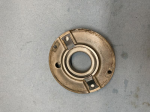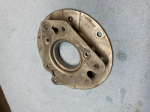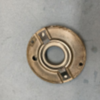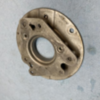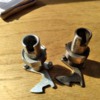Doug,
Plain ol' cap.
The distributor housing or casting, will take either type of points plate.....as Jack was suggesting....I think.....
You can put Duraspark pieces in an older casting, but you need to cut a slot for the wiring to fit......but darned close!
What housing are you seeking?????
Steve
I have the entire distributor except the points plate. It is D30F-12127-FA with the correct vintage AUTOLITE identification. The Ford application listing shows it as a '73 Q which is what my '73 should have been built with, and a 2M9 date code so it isn't a service part.
Yes, Jack is correct. All Ford distributor POINTS housings are of the same internal dimensions.
The point plates and the points cams interchange.
You are correct about the Motorcraft pointless distributors having the same dimensions as well, just requiring the "slot" for the larger wiring harness.
That is what I currently have in the car. A Duraspark II with a Pantera-Electronics ignition controller and a big mutha' ignition coil.
What's nice about this particular housing is that it has the original , just manufactured luster and the stampings haven't been modified or enhanced like so many "restored" ones are now.
In regards to your earlier post though, the points are not special, they are just the straight points that go in any of the Ford dual point distributors.
So this distributor gets put back to as delivered new by Ford and is a legacy to the car.
Since it is just for one year, '73, it's a rare piece amongst rare pieces, so worth the effort.
This is like finding an original, close to mint distributor for your 'Goose. You've gotta' keep it.
The mechanism is nice and tight too which is really uncommon with the Autolites I've rebuilt/reassembled, which is quite a few.
It even has the right wire with the red coil push on end and AUTOLITE molded into the rubber grommet. Close to a museum quality piece.
All original Autolite dual points are pricey these days. I've rarely seen these come up at all if ever?




